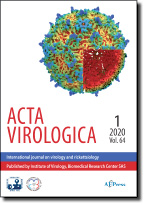Abstract: Central nervous system is protected by the blood-brain barrier, which represents a physical, metabolic and transport barrier and is considered to be a part of a highly dynamic system termed neurovascular unit. Several pathogens, among them viruses, are able to invade the brain. Traversal of viruses across the blood-brain barrier is an essential step for the invasion of the central nervous system and can occur by different mechanisms – by paracellular, transcellular and/or by “Trojan horse” pathway. Penetration of viruses to brain can lead to the blood-brain barrier dysfunction, including increased permeability, pleocytosis and encephalopathy. Viruses causing the central nervous system infections include human immunodeficiency virus type 1, rhabdovirus, different flaviviruses, mouse adenovirus type 1, herpes simplex virus, influenza virus, parainfluenza virus, reovirus, lymphocytic choriomeningitis virus, arbovirus, cytomegalovirus, mumps virus, parvovirus B19, measles virus, human T-cell leukemia virus, enterovirus, morbillivirus, bunyaviruses, togaviruses and others. In this review we summarized what is known about the routes of how some viruses enter the brain and how neurons and glial cells react to infection.
|
 download file
download file
